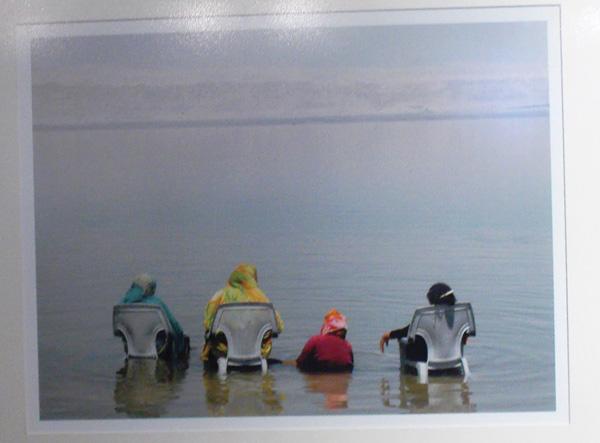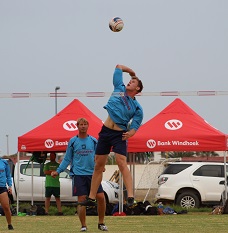
Stronger than Words Exhibition: An Ocean of Images

Ranging from scenes that seem outlandish such as a group of women lounging on chairs in the middle of a river to atrocities of our apartheid era of women and men tortured, are only some of the images displayed at the “Stronger than Words” photographic exhibition currently running at the Franco Namibian Cultural Centre’s art gallery.
This striking exhibition is the work of FNCC lecturer Djunior Svane and his students. The exhibition opened this week Monday and runs until 17 March 2016.
This expressive exhibition comprises three types of photographic sections covering the history of photography, the history of photography in Namibia and contemporary photography.
In the history of photography section, the images were produced using the historical Camera Obscura technique where the image is projected through a pinhole into a dark box.
This technique comes from the remote antiquity of photography by building a dark room camera with a pin hole diametric to sunlight which reflects an inverted image inside the camera obscura in graded tones from black to white solely with the help of light.
The history of Namibian photography is exhibited through images from the famous “Bluebook” of 1918 as an indictment of the 1904 and 1908 genocide against the Ovaherero and Nama people. The negatives of the images used in the bluebook were re-discovered in an unlabelled carton in the National Archives of Namibia.
Mr Svane explained that “the work of his students are reflective of quality photography and that he encourages his students to capture images or subjects that draws their attention, imagination and heart.”
This is vividly reflected in the contemporary photographs captured by the students. These images elicit a reaction from the viewer ranging from utter bewilderment to a sense of nostalgia expressed through familiar spaces and faces. These dimensional photographic pieces are noteworthy as many consist of images reflected on buildings and other structures, or portrayed by Windhoek-at-night scenes where the lights and lanes disappear into an abyss.
The exhibition is held in collaboration with Nicky Marais from the College of the Arts and Werner Hillebrecht, a Namibian historian and heritage consultant, and was inspired by a school for the deaf in Gaza.












































